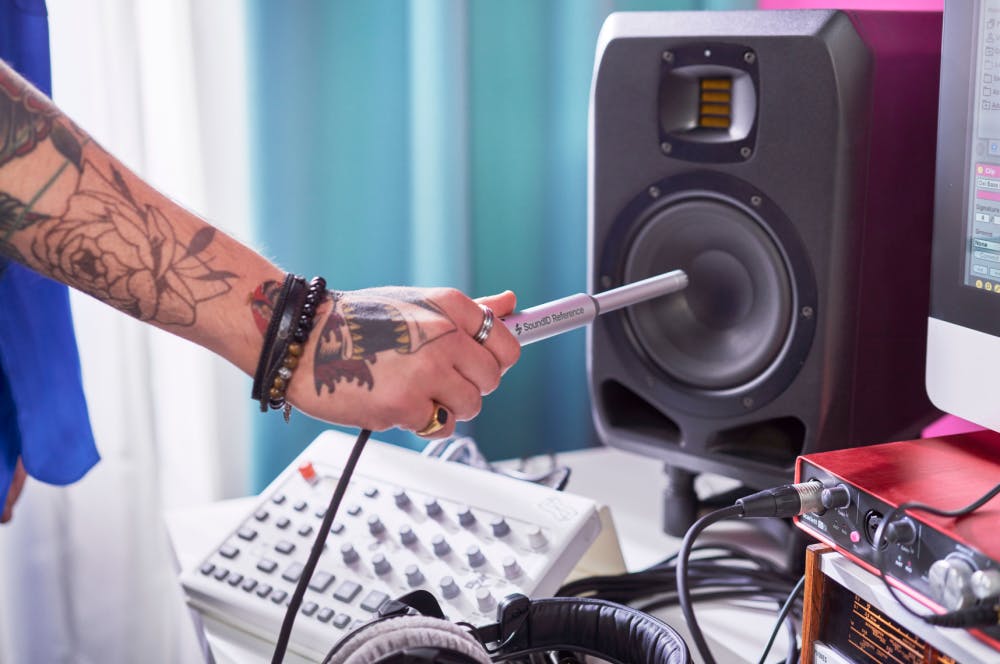In these blog posts, we provide a lot of information on how to properly set up and tune your monitor system and how to use SoundID Reference so that you can be confident that what you hear is accurate. Recently, I also proved that properly tuning a monitor system can save a studio thousands of dollars a year.
In early 2020, I started helping out with technical issues at Chalice Recording Studios, Los Angeles. We have three large SSL tracking/mixing rooms and a few DAW-based production rooms. The studios are used by A-list artists, producers, and songwriters and every room is busy almost every day. One of the first issues mentioned by the studio staff was that they were blowing a lot of subwoofer speakers—maybe one speaker in each SSL room every month. These are the subs for the large main monitor systems built into the front walls of the rooms.
Our monitor systems were custom-designs by George Augsperger and have 15 or 18-inch subwoofers, dual 15-inch midrange drivers, and horn-loaded tweeters. They are powered by about 10,000 watts of power for each room. These systems are designed for accurate mixing but can also play extremely loud. Deafeningly loud if you so desire. So how are people blowing up the subwoofers all the time? Let’s look at how these monitors are set up and how getting the frequency response dialed in saves the speakers from blowing up.
Monitor Components
Unlike most nearfield studio monitors, these custom speakers require some external electronics and power amps. The audio goes from the console into a crossover unit that separates the subs, mids, and highs, and feeds those signals to the appropriate amplifiers. One amp powers the left sub, one the right sub, one the left mids, one the right mids, one the left highs, and one the right highs. The crossover balances the volume of low vs. mids vs. highs and the mid and high-frequency speakers also have equalizers for any small frequency corrections.

These crossovers, equalizers, and amps need to be carefully adjusted and optimized to create a well-balanced and accurate playback system. When properly tuned in a well-treated room, these large main monitors are extremely accurate and can be used for mixing and critical listening. Room correction software, like SoundID Reference, can further fine-tune the monitor system for the best possible in-room response, but, as always, the speaker system and room have to be properly set up.
What We Want To Hear
In our studios, the monitors had been adjusted by a well-meaning staff member for hyped playback to impress clients with an incredible amount of low end that shakes the room and your body. Maybe the subs were turned up with the idea that the clients wouldn’t play the music too loud if the bass felt powerful enough.
No matter how loud or soft we listen to music, our brain needs to understand the music. That means we want to feel the bass, but we also want to hear and understand the lyrics of the song. If the speakers provide too much bass, most listeners will keep turning up the volume to try to hear the vocals and high-frequency energy better. This results in the bass getting even louder and eventually the (overly-hyped) bass will distort and blow the speakers.
Software correction, like SoundID Reference, would automatically correct the frequency balance problems of the monitors, but in a commercial studio, clients often use their own computers, DAWs, and even their phones to play music so software-based room correction is not always possible. For that reason, it’s even more important that the crossovers, equalizers, and amps are dialed in for a well-balanced sound.
Right away I spent some time in each room listening to music and measuring the playback systems with Room EQ Wizard and Fuzzmeasure to properly set up the electronics for an accurate sound. Just by rebalancing the levels of the lows, mids, and highs, I was able to reduce the amount of EQ that was being applied. These tweaks resulted in more natural and accurate sounding monitors that were easier to listen to at any volume. As a bonus, since the rooms have been properly tuned for accurate, rather than hyped sound, we haven’t blown any subwoofer speakers. At about $300 per woofer, this will save the studio a few thousand dollars per year.
The Results
Properly tuning our monitors saves the studio money while providing a better experience for the clients. As well-intentioned as it may have been, hyping the bass response of the monitors to try to please or impress the clients was the wrong thing to do. Some producers and mixers prefer a slightly modified frequency response for their monitoring, called a “house curve.” We can accommodate this by creating custom EQ presets for our systems much the same way SoundID Reference allows you to apply a custom parametric EQ curve to a calibration profile.
For more information on properly equalizing your system, be sure to check out these articles:
Successful Mixing with the Proper Frequency Response and a House Curve




